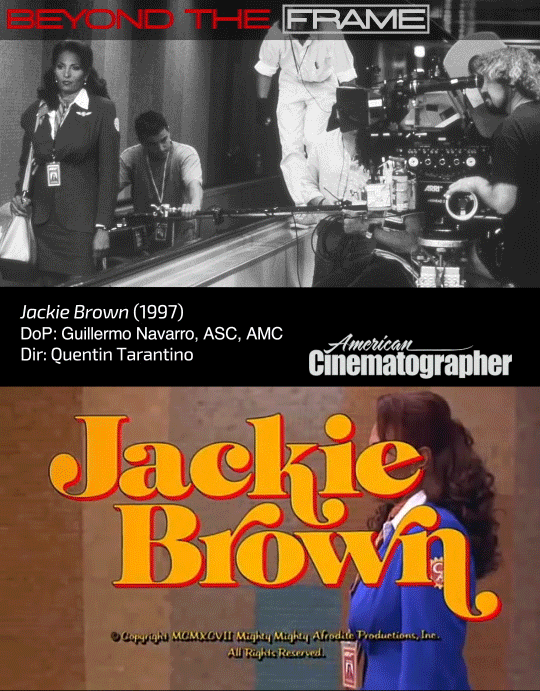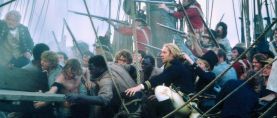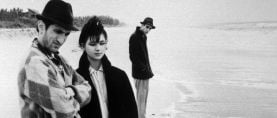
Beyond The Frame: Jackie Brown
Shooting this crime drama with Quentin Tarantino and cinematographer Guillermo Navarro, ASC, AMC.


Seeking a gritty, realistic look for his wry crime film Jackie Brown (1997), writer-director Quentin Tarantino and cinematographer Guillermo Navarro, ASC, AMC found inspiration by screening Ulu Grosbard’s 1977 heist classic Straight Time (shot by Owen Roizman, ASC). Tarantino admired the film’s raw vision of Los Angeles, as well as its blending of location and studio work with a cinematographic style that mimics an available light ambiance. Tarantino and Navarro also watched Robert Culp’s 1972 action melodrama Hickey and Boggs (photographed by Bill Butler, ASC) and Peter Bogdanovich’s 1981 farce They All Laughed (Robby Müller, BVK, NSC). The director felt that each of these films made interesting and realistic use of the metropolitan landscapes of L.A. and New York, respectively.
In adapting Elmore Leonard’s crime thriller Rum Punch, Tarantino transplanted the novel’s narrative from Miami’s South Beach to L.A.’s South Bay, an area which encompasses the towns of Torrance, Hawthorne, Carson, Wilmington, Long Beach, San Pedro, Palos Verdes, Inglewood and Marina Del Rey.
In the production photo at the top of the page, by Darren Michaels, Steadicam/A-camera operator Dan Kneece, key grip Rick Stribling (on ledge) and dolly grip Robert “Dolly Bob” Ivanjack execute the film's title sequence, an extensive tracking shot of Jackie — played by actress Pam Grier — hustling through an iconic passageway within the Los Angeles International Airport.
(The location has been for numerous productions, including Mad Men, in which character Don Draper makes a similar appearance from the opposite direction.)
Given Tarantino’s affinity for discourse, Navarro found his greatest challenge on Jackie Brown to be devising a unique style for a dialogue-driven film set in some not-so-picturesque locales. As Navarro told American Cinematographer, “The fact that this was a contemporary story had a lot to do with how I approached the style. Anything seen in everyday life is absent of the ‘magic’ of style due to one’s daily relationship to it. Interpretation is an ingredient one can sculpt with when addressing the future or the past, but not when dealing with a contemporary story which has strong doses of realism. This entire film takes place at locations everyone has a visual relationship to such as a mall and an airport. There’s no interpretation that can cross the everyday vision of these places, so I had to take a very realistic approach. But being on location can be very difficult, because you don't have any of the benefits you’d have on a soundstage, where you can make lighting and production design decisions you’re just stuck with the space. Since the story is very dialogue-driven, it became complicated to execute some of the shots [in a visually interesting way].”
If you enjoy archival and retrospective articles on classic and influential films, you'll find more AC historical coverage here.






